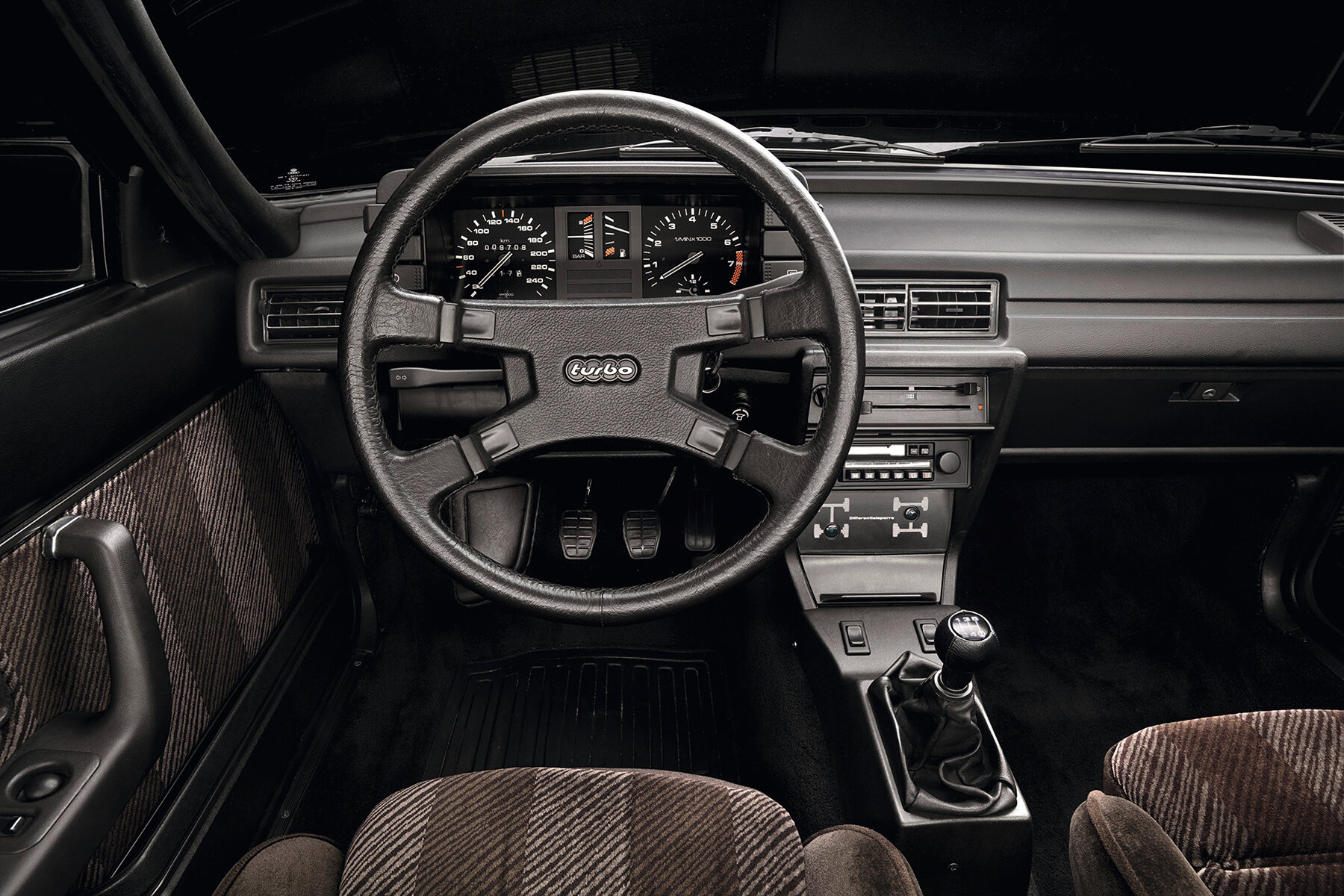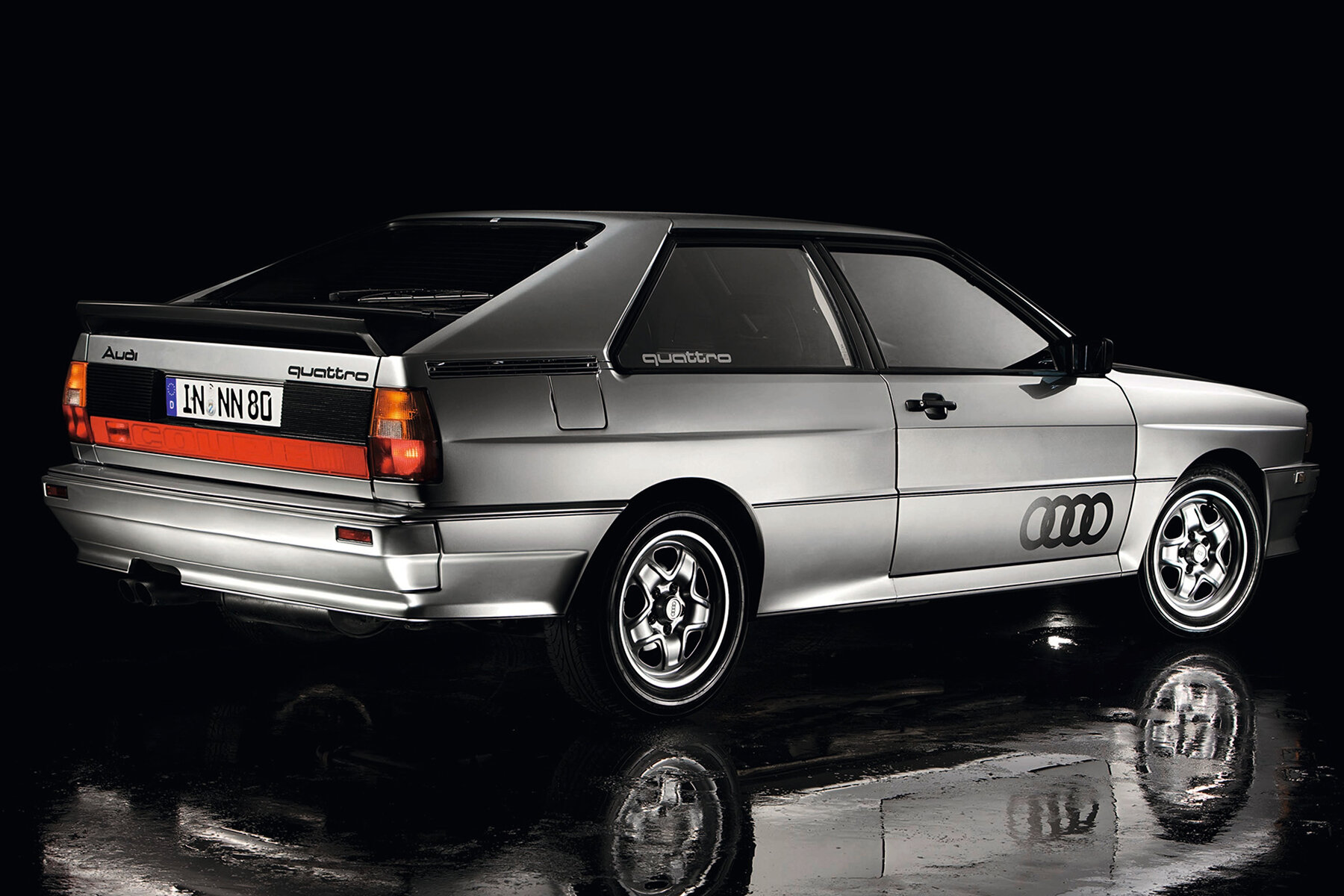Born to conquer the world’s rally stages, the legendary Audi Quattro (or UR-Quattro) is a potent and superbly-engineered classic car today, that’s cooler than a cool thing. Here are our top tips for buying one, as well as specs, prices and history...

Audi Quattro (1980-1991). The quad-headlight arrangement only lasted until 1983, but is visually striking
► The full Audi Quattro (1980-1991) buyers guide
► Everything you need to check for when buying a Quattro
► Search Audi Quattro for sale on Classic Cars for Sale
If you’ve had any interest in the rallying world over the past 40 years or so, then you’ll know that one of the most iconic sights has long been that of an Audi Quattro howling to yet another win (usually with Walter Röhrl or Michèle Mouton behind the wheel), its evocative five-cylinder warble offset by a deafening fire-spitting exhaust thunderclap on the overrun.
Often viewed unfairly as being over-complex, the Quattro can actually trace its lineage to the relatively simple Volkswagen Iltis military off-roader, making it a tempting classic car buy today.
Audi Quattro Buying guide
Bodywork
The only Audi Quattros you need to be wary of in terms of body corrosion are the earlier (pre-1985) examples, which, unlike later models, were not galvanised at the factory. These have a habit of rusting in the usual places (sills, wheelarches, door bottoms), plus – potentially more seriously – along the wing seams. This latter in particular can signify a car that has been involved in a big shunt at some point, and then repaired on the cheap. As a rule, you should avoid these cars like the plague unless they are really very, very cheap.
Later galvanised cars are usually largely rot-free (unless, again, they’ve been involved in an accident at some point), with post-1988 model-year cars the best-protected of them all, thanks in part to the move from metal to glassfibre bootlids.
ENGINE
Three engines were used throughout the Audi Quattro’s life: the earliest cars packed a 200bhp 2.1-litre five-cylinder 10-valve engine (‘WR’ in Audi-speak); September 1987-on cars used the 2.2-litre ‘MB’ (same power, but torque delivered at lower revs); and October 1989-on models used a 220bhp 20-valve ‘RR’ engine.
The latest RR engines are the most durable, but parts prices remain high. Early WRs have proved less robust, but can still manage 150,000 miles between re-builds if oil-changes have been regular (every 5000 miles or so) and quality synthetic oils have been used.
Turbo problems beset early cars more than later water-cooled models: gutless performance and clouds of exhaust smoke are classic symptoms of a blown turbo, while anything other than an Audi-branded oil filter can starve the top end of the engine of oil at cold start-up, causing major damage in the long term. A leaking oil-cooler can prove similarly catastrophic if left unchecked.
INTERIOR

Audi Quattro (1980-1991): interior isn’t as high quality as some German cars of its era, and parts are hard to find
Audis have always been built to a high standard, so problems outside of normal wear and tear are rare, although the plastics feel cheap inside, especially on the earlier (pre-1985) models. The biggest bugbear concerns electrics: many post-1983 Quattros use a digital instrument display whose LEDs elements eventually blow. Be suspicious of a display that’s conveniently half-dead, though – unscrupulous types have been known to disable selected warning lights in order to hide serious mechanical problems.
Early models used rather low-quality electrical components, too (later models are much better), making fault-finding a nightmare – connections corrode seemingly at random, but at least they have simpler looms than the later cars.
New-old-stock trim is no longer available for these cars, and while used sourcing used trim is possible (albeit expensive), it’s always best to buy a tidy car in the first place. Don’t be put off by non-functioning air conditioning, though – but the original parts needed to repair it are rare these days (and therefore hugely expensive), and many owners simply don’t bother, choosing instead to go via an independent air conditioning specialist.
ELECTRICS
As predicted back in the 1980s, it’s the in-car electronics that can be one of the biggest trouble sports for the Quattro. Post-1983 cars with the digital dashboard are, in particular, problematic when they go wrong. Check all of the dashboard lights come on with the ignition and go off when the ignition is switched off. Also, don’t dismiss something like a non-functioning speedometer or dashboard illumination as trivial. On a normal car, maybe, but you could be looking at a £700 dashboard rebuild in order to get the dash up and running properly, and secondhand units are both expensive and there’s nothing to say they won’t suffer from the same problems.
RUNNING GEAR
The Quattro’s all-wheel drive system may be complex, but it’s as tough as old boots. Clutches last for over 100,000 miles if treated sympathetically, and while crunching gearshifts signify a worn synchromesh, reconditioned gearboxes can be had for a couple of hundred pounds, although fitment is a long and potentially expensive process.
The main area of concern surrounds the centre diff locks, which can seize either through lack of use or indifferent maintenance. Engage and disengage them and make sure the warning lights inside the car come on and go off again to suit. Failure to operate can mean serious problems, although it’s worth checking the control units first to see if they’re simply in need of lubrication.
Elsewhere, regular over-vigorous cornering can drastically shorten the life of the subframe bushes, while a similar constant thrashing of later 20-valve cars can cause the rear subframe to fracture – new replacements will set you back nearly £900.
Should you buy an Audi quattro? the ccfs verdict
The rally pedigree is obvious, but these cars are icons in their own right. Timeless styling, generally high build quality and 200bhp-plus power allied to super-grippy handling tick all the boxes, and there’s even a healthy dose of practicality, with four seats and a decent-sized boot. Buy a sorted example, and you’ll never look back.
You might also like

Audi Quattro (1980-1991) – rear three-quarter view highlights its muscular wheelarch extensions
Audi Quattro 20V (1988) specs and details
Production 1980-1991
Engine capacity 2226cc
Cylinders 5-inline
Valvetrain DOHC, 20-valve
Maximum power 220bhp@5900rpm
Maximum torque 228lb ft@1950rpm
Maximum speed 141mph
0-60mph 6.3sec
Fuel economy 19.1mpg
Gearbox Five-speed manual